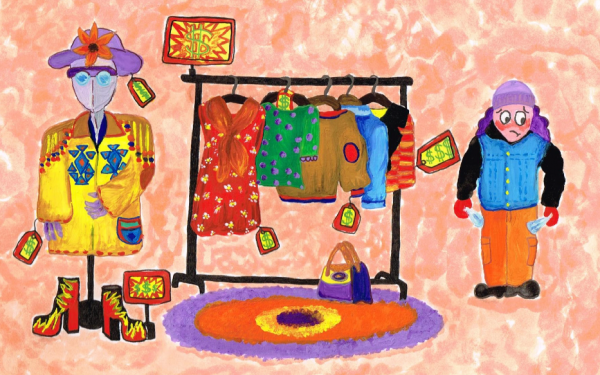Dances With Warehouses
Montreal Choreographer Brings Winter to Life With Janvier
The start of this calendar year has a special significance for Montreal-based choreographer Tedi Tafel, who brings Janvier to wintry life in an old railway building.
Season is the drive that dictates the pace of this sensual, site-specific performance piece. The relationship between body and the 6,000-square-foot space takes
centre stage, transposed with light and movement.
This scene is the set of what Tafel describes as “dance created out of architecture.”
Janvier is the re-mastering of a work that was created in a two-and-a-half week residency a few years ago for a full-year project called Calendar. “My desire with the remount was to go deeper with the piece,” explained Tafel. “A chance to take it further for the people involved.”
Going back to the original site with the original cast, four dancers and two live electro-musicians combine their talents with a lighting director and video projector to re-play nine different “movement events” that lead into each other.
The piece runs for three hours, looping circularly over time, and the audience is invited to come and go as they please, walk around, and install themselves as close or far as they feel.
“I wanted to change the conventions of what is a performance and who is an audience, looking into how we respond when the usual criteria isn’t offered,” said Tafel. “It allows the audience to participate in a different way—they have choices. It makes them more active, more participating. It’s more than just sitting and watching.”
There is no pressure in the slow-paced production to run around from room to room to see everything, she continued, as Janvier offers a winter hibernating feel as the dance unfolds.
“It was important for me to revisit Janvier in January […] as the piece itself speaks really about the beginning of the year,” said Tafel. “That time, the senses of life underground, that slowing down, that beginning.”
Tafel, who has taken many trips to immerse herself in the natural landscape—from the boreal forest to Mexico to Iceland—has been studying bodies in non-traditional and natural venues for the last two decades.
“Every single space will have a new discovery,” she said. “I can’t know what that is until we really get in the place […] and start to see how one participates in the environment.
“I can’t hold tightly to my ideas because they need to be able to alter and transform once the dancer makes contact with the actual architecture, or the light, or the neighbourhood, or the sounds. The space is very alive. I love the interaction.”
Describing the connection between body and space as “dancing with rather than dancing in,” Tafel explained she looks for spaces with unique qualities, windows, as well as the presence or absence of natural space in the urban city.
“I’m always looking for the essentialized movement,” she explained. “I really feel strongly that dance should exist in the regular and daily spaces.
“It’s essential to understanding things about humanity that we can’t understand when we’re separated in the theatre,” she continued. “Theatre has amazing things to offer, but I’m mostly excited about what dance is as a language and what the relationship is to our surroundings.
“It’s about how dance can express this and inspire us to be more sensitive to where we are.”
Janvier / 661 Rose de Lima St. / Jan. 13 to 15 and Jan. 19 to 22 / 6:00 p.m. to 9:00 p.m. / $20 at the door, $15 pre-sale and students

1_900_691_90.jpg)
_600_832_s.png)


1_600_375_90_s_c1.jpg)

web_600_375_90_s_c1.jpg)